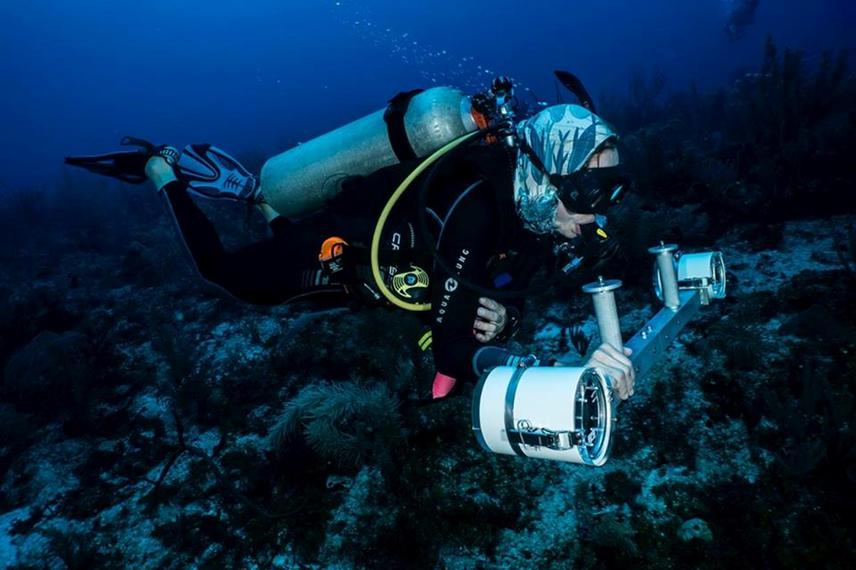Natalia Rivas Escobar
The project will provide data of size of individuals, abundance, maturity stages and composition of twelve species of parrotfishes (Scarus and Sparisoma) and will compare these variables in sites with high, low and no human population given the fact that different studies in other insular territories of the world have shown negative relation between human population density and community structure of fishes. The research will be carried out within the San Andres, Providencia and Santa Catalina Archipelago, named Seaflower Biosphere Reserve by UNESCO in 2000 and will use a non-destructive and innovative technology that will allow the underwater study of this group of fishes and will provide the data to calculate and record the variables mentioned above.

Biological information about species and ecosystems is an important tool to understand the impact of human activities on them and to generate efficient conservation programs to reduce such impacts. Coral reefs are among the most diverse and valuable ecosystems on Earth, supporting more species per area unit than any other marine ecosystem. Different threats are causing a significant decline of this ecosystem worldwide, such as global warming, contamination and overfishing.
Parrotfish, primary herbivores on coral reefs of the study area, are key species for their role as bioeroders and algae growth controllers in reefs, favoring growth, fecundity, survivorship and recruitment of coral. In the study area, fishing and consumption of this group of fishes is increasing and decline in their populations has been registered by visual censuses over the years. To extract this species is to risk the services they provide in their ecosystems and it is of concern that there is not verifiable and quantifiable data about the current state of their populations and how their extraction is changing their assemblage in the area, which could show us the better way to establish an action plan to protect them.
The project will provide data of size of individuals, abundance, maturity stages and composition of twelve species of parrotfishes (Scarus and Sparisoma) and will compare these variables in sites with high, low and no human population given the fact that different studies in other insular territories of the world have shown negative relation between human population density and community structure of fishes. The research will be carried out within the San Andres, Providencia and Santa Catalina Archipelago, named Seaflower Biosphere Reserve by UNESCO in 2000 and will use a non-destructive and innovative technology that will allow the underwater study of this group of fishes and will provide the data to calculate and record the variables mentioned above.